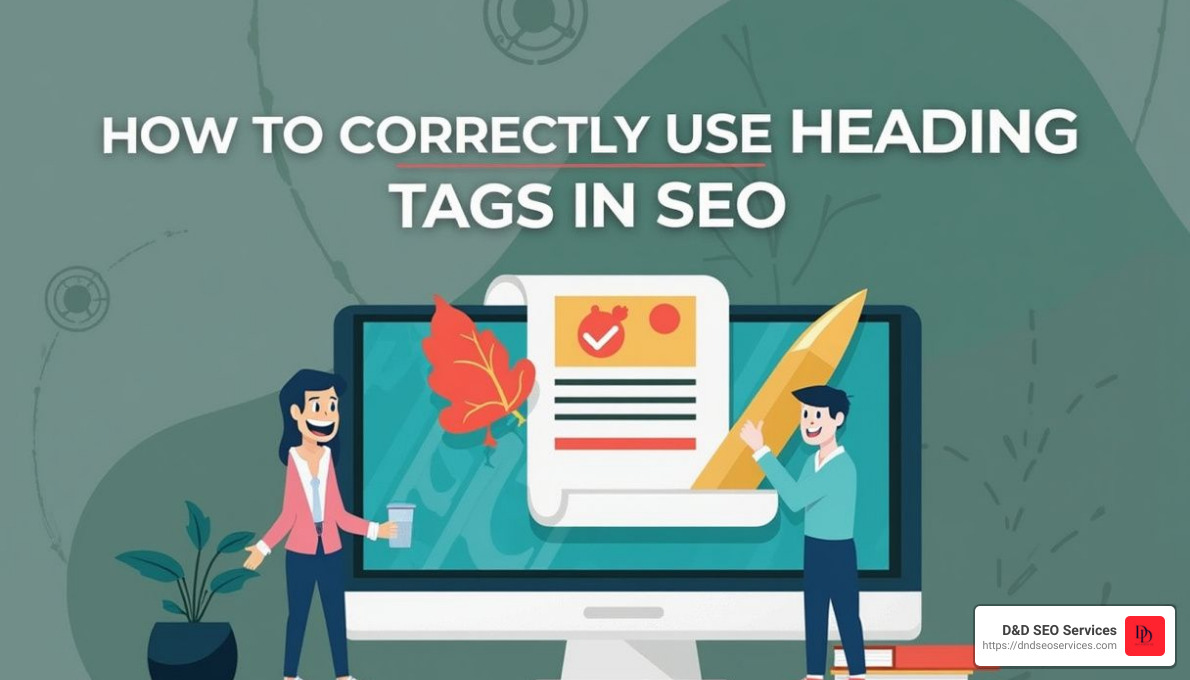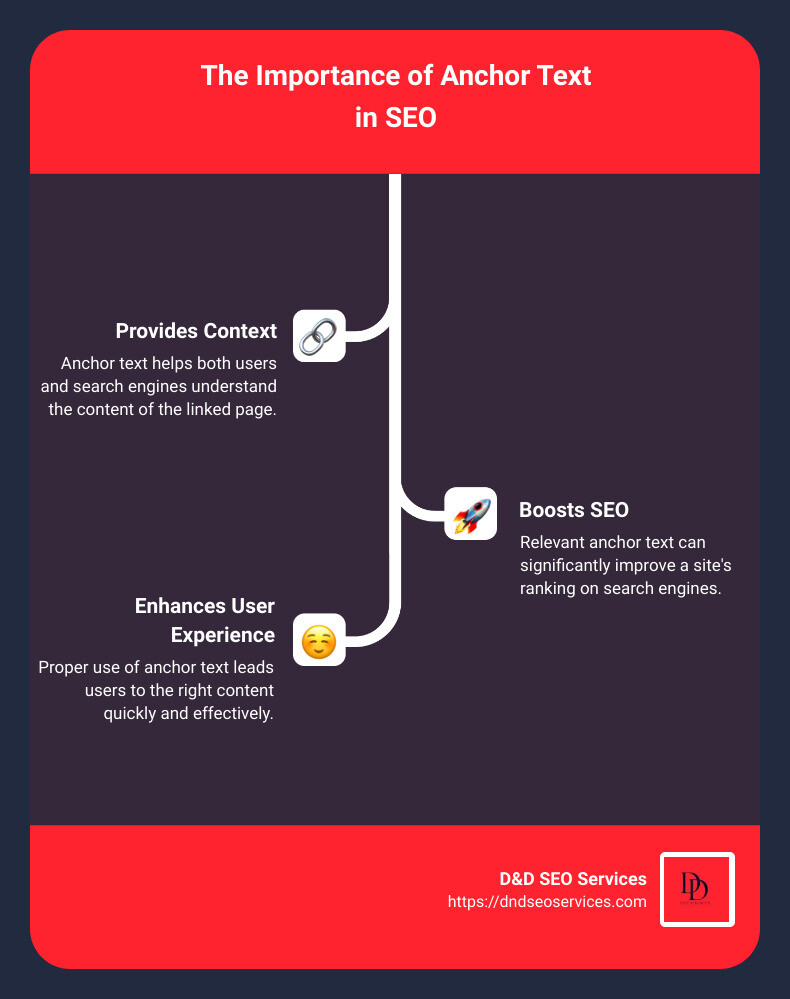Why Backlinks Matter for Your Website
Understanding Backlinks is crucial for anyone looking to improve their website’s visibility. In simple terms, backlinks are links from other websites that point back to your own. These links act like votes of confidence from other sites, telling search engines that your content is valuable and trustworthy.
- Definition: Backlinks are links on other websites that send users directly to your site.
- Importance:
- Increase your site’s credibility and authority.
- Help improve your search engine ranking.
- Drive direct traffic from other websites.
- SEO Basics: Backlinks are one of the major factors that search engines like Google use to rank pages.
To sum it up: The more high-quality backlinks your site has, the better it will perform in search results.
I’m Danielle Birriel, founder of D&D SEO Services. With over a decade of experience focused on Understanding Backlinks, I help local businesses improve their online visibility.
Basic Understanding Backlinks glossary:
- Understanding and Leveraging Latent Semantic Indexing (LSI) Keywords
- Semantic SEO: Complete Guide to Rank Higher on Search Results
- The Power of Long-Tail Keywords in SEO Content Creation
What Are Backlinks?
Backlinks are links on other websites that point to your website. They are crucial for SEO because they act like votes of confidence from other sites. These votes tell search engines that your content is valuable and trustworthy.
Definition
In simple terms, backlinks are hyperlinks on external websites that direct users to your site. They are also known as “inbound links” or “referral links.”
Inbound Links
Inbound links are links from other websites that lead to your site. These are the essence of backlinks and are vital for SEO. They help search engines understand that your content is valuable and relevant.
External Links
External links, or outbound links, are links from your website to other websites. While they don’t directly impact your SEO like inbound links, they can still be beneficial. Linking to high-quality, relevant sites can make your content more valuable to readers and can sometimes encourage those sites to link back to you.
Internal Links
Internal links are links that go from one page on your website to another page on the same website. These links help search engines understand the structure of your site and can improve the user experience by making it easier to steer.
Link Direction
Here’s a quick breakdown of link direction:
- Inbound Links: From other websites to your site.
- External Links: From your site to other websites.
- Internal Links: Within your own website.
Understanding these different types of links is essential for a well-rounded SEO strategy. Each type of link plays a unique role in how search engines perceive your site’s value and relevance.
Next, we’ll dive into the different Types of Backlinks and their specific roles in enhancing your website’s SEO.
Types of Backlinks
When it comes to understanding backlinks, it’s important to know there are different types, each with its own impact on SEO. Let’s break them down:
Dofollow Backlinks
Dofollow backlinks are the most valuable type of backlinks for SEO. These links pass on “link equity” or “link juice” from one site to another. When a reputable site links to your content with a dofollow link, it tells search engines that your content is trustworthy and valuable.
For example, if a well-known fitness blog links to your article about marathon training, that link will help boost your page’s authority in the eyes of search engines. This can lead to higher rankings and more organic traffic.
Nofollow Backlinks
Nofollow backlinks include a special attribute (rel="nofollow") that tells search engines not to pass on link equity. These links are often used in situations where the linking website does not want to vouch for the content of the linked site.
Common sources of nofollow links include blog comments, press releases, and paid advertisements. While they don’t directly boost your SEO, they can still drive traffic and increase your brand’s visibility.
Sponsored Backlinks
Sponsored backlinks are links that are paid for. These links should include the rel="sponsored" attribute to comply with search engine guidelines. This attribute signals to search engines that the link is part of a paid promotion and should not pass link equity.
For instance, if you pay for a link placement in an article on a popular website, that link should be marked as sponsored. This helps maintain transparency and ensures that search engine rankings are not unfairly manipulated.
UGC Backlinks
UGC backlinks stand for “User-Generated Content” backlinks. These links come from content created by users, like comments, forum posts, or reviews. They should use the rel="ugc" attribute to indicate their origin.
While UGC backlinks can be valuable for driving traffic and engagement, they usually carry less link equity compared to editorial links. However, if the user-generated content is on a reputable platform, it can still provide some SEO benefits.
Summary Table
| Type of Backlink | Attribute | SEO Impact |
|---|---|---|
| Dofollow | None | High |
| Nofollow | rel="nofollow" |
Low |
| Sponsored | rel="sponsored" |
Low |
| UGC | rel="ugc" |
Moderate |
Understanding these different types of backlinks will help you develop a more effective SEO strategy. Focus on earning high-quality dofollow backlinks while also leveraging other types to boost traffic and brand awareness.
Next, we’ll explore Why Backlinks Are Important for SEO and how they contribute to your site’s authority and ranking.
Why Are Backlinks Important for SEO?
Backlinks are crucial for SEO because they help search engines understand the importance and relevance of your website. Let’s break down why they matter.
Authority
Backlinks act like votes of confidence. When a reputable site links to your content, it tells search engines that your site is trustworthy. This boosts your site’s authority.
For example, a backlink from a site like TechCrunch can significantly increase your site’s credibility. Google uses these links to gauge how reliable your content is.
Relevance
The relevance of the linking site to your content is also important. If a plumbing website links to your guide on fixing leaks, it’s more valuable than a link from a site about cats. Google looks for topical relevance to ensure the link makes sense.
PageRank
PageRank is an algorithm used by Google to rank web pages. It evaluates the number and quality of backlinks to a page to determine its importance. Think of it as a popularity contest where the most linked-to pages win.
For instance, if Page A links to Page B, Page B gains some of Page A’s authority. The more high-quality links you have, the higher your PageRank.
Domain Authority
Domain Authority (DA) is a metric that predicts how well a website will rank on search engines. Websites with high DA scores can pass more authority to your site through backlinks. A link from a high DA site like CNN is more valuable than one from a low DA site.
Quality vs. Quantity
Not all backlinks are created equal. One high-quality backlink can be more powerful than 1,000 low-quality ones. High-quality backlinks come from authoritative and relevant sites. Low-quality backlinks might come from spammy or unrelated sites.
Here’s a quick comparison:
| High-Quality Backlinks | Low-Quality Backlinks |
|---|---|
| From authoritative sites | From spammy sites |
| Relevant to your content | Irrelevant topics |
| Harder to obtain | Easier to get |
Summary
Backlinks are vital for SEO because they boost your site’s authority, relevance, and PageRank. Focus on earning high-quality backlinks from authoritative and relevant sites to improve your search engine rankings.
Next, we’ll explore How to Get High-Quality Backlinks and the strategies you can use to build a strong backlink profile.
How to Get High-Quality Backlinks
Getting high-quality backlinks is essential for boosting your website’s authority and improving your SEO. Let’s explore some effective strategies.
Content Creation
Creating valuable content is the cornerstone of any successful backlink strategy. High-quality, informative, and engaging content naturally attracts backlinks.
Examples of content that attract backlinks:
- Guides and Tutorials: Comprehensive guides that answer common questions.
- Infographics: Visual content that simplifies complex information.
- Original Research: Studies and surveys that provide new data.
Pro Tip: Use tools like Semrush’s SEO Writing Assistant to optimize your content for search engines.
Guest Blogging
Guest blogging involves writing articles for other websites in your niche. This not only helps you reach a broader audience but also earns you valuable backlinks.
Steps to successful guest blogging:
- Find Quality Sites: Look for reputable sites in your industry.
- Pitch Topics: Propose topics that are relevant and valuable to their audience.
- Write High-Quality Posts: Ensure your guest posts are informative and well-written.
Case Study: When Backlinko started, over 50 guest posts and interviews in 12 months significantly boosted their organic traffic.
Partnerships
Leveraging existing business relationships can also help you gain backlinks. Collaborate with suppliers, retailers, or other businesses to feature each other on your websites.
Partnership Ideas:
- Feature Content: Write articles or create content that highlights your partners.
- Co-Promotions: Host webinars or joint events that can be promoted on both websites.
Example: A bakery partnering with a coffee shop for cross-promotion can result in mutual backlinks.
Local Community
Getting involved in your local community can provide opportunities for backlinks. Participate in local events, sponsor activities, or volunteer.
Local Link-Building Tactics:
- Sponsor Events: Get a backlink from the event’s website.
- Run Local Meetups: Organize events and get featured on local community sites.
- Volunteer: Engage with local schools or universities and get mentioned on their websites.
Testimonials
Offering testimonials to other businesses can earn you backlinks. Companies love to showcase customer feedback and often link back to your site.
How to use testimonials:
- Provide Feedback: Write a testimonial for a product or service you use.
- Include Your Website: Ensure your testimonial includes a link to your site.
Example: Companies often publish case studies or testimonials with backlinks to their customers’ websites.
Press Releases
Press releases can help you get media coverage and backlinks. Write and distribute press releases about newsworthy events or original research related to your business.
Tips for effective press releases:
- Original Research: Conduct studies and share the results.
- Newsworthy Events: Announce significant changes or achievements in your business.
Tool: Use Prowly’s Media Pitching Tool to find relevant publications and contacts.
HARO
Help a Reporter Out (HARO) connects journalists with sources. Responding to HARO queries can get you featured in articles with backlinks to your site.
How to use HARO:
- Sign Up: Subscribe to HARO and receive daily emails.
- Respond to Queries: Answer relevant questions thoroughly.
- Include Links: Provide links to your relevant pages.
Pro Tip: Journalists across all niches need expert quotes, making HARO a powerful way to gain authoritative backlinks.
By focusing on these strategies, you can build a strong backlink profile that improves your site’s authority and SEO performance. Next, we’ll explore how to analyze and evaluate these backlinks to ensure they are benefiting your site.
Analyzing and Evaluating Backlinks
Understanding backlinks is crucial, but analyzing and evaluating them is just as important. This ensures your SEO strategy is on the right track. Let’s explore the tools and methods to analyze your backlinks effectively.
Backlink Analysis Tools
Several tools can help you monitor and evaluate your backlink profile. These tools provide insights into the quality and relevance of your backlinks.
Google Search Console
Google Search Console (GSC) is a free tool that offers valuable data about your site’s backlinks.
Steps to check your backlinks in GSC:
- Log In: Access your GSC account.
- Steer to Links: Find “Links” on the left-hand sidebar.
- View Reports: Check the “Top linked pages,” “Top linking sites,” and “Top linking text.”
You can also export this data as a CSV file for more detailed analysis.
Semrush
Semrush is a comprehensive SEO tool that provides in-depth backlink analysis. It can analyze both your site and your competitors.
Using Semrush for backlink analysis:
- Enter URL: Paste your domain or a specific URL into the search bar and click “Analyze.”
- Review Metrics: Check metrics like Authority Score, Referring Domains, and Backlinks.
- Compare Competitors: Add up to five competitor domains to see how your backlink profile stacks up.
Semrush also allows you to export your data to a PDF for further analysis or client reporting.
Relevance and Authority Score
Not all backlinks are created equal. Google considers both the relevance and authority of the linking site.
Relevance: This is about how closely the linking site’s content matches your site’s content. For example, a link from a popular music blog to your guitar pick store is highly relevant.
Authority Score: This metric measures the overall quality of a domain. High-authority sites like major news outlets or educational institutions carry more weight.
Example: A backlink from a well-known music magazine (high authority) discussing guitar equipment (high relevance) is extremely valuable.
Evaluating Backlinks
When evaluating your backlinks, consider these factors:
- Anchor Text: The text used in the link. Keyword-rich anchor text can boost your SEO.
- Link Context: The surrounding content. Links embedded in relevant, high-quality content are more valuable.
- Link Type: Whether the link is dofollow or nofollow. Dofollow links pass SEO value, while nofollow links do not, but can still drive traffic and brand awareness.
Pro Tip: Use tools like Semrush’s Backlink Analytics to check the authority score and relevance of your backlinks.
Maintaining a Healthy Backlink Profile
Regularly auditing your backlinks is essential to ensure they continue to benefit your site.
Audit Steps:
- Identify Toxic Links: Use tools like Ahrefs to find harmful links.
- Disavow Toxic Links: Submit a disavow file in Google Search Console to ignore these links.
- Monitor New Links: Keep track of new backlinks to ensure they are high-quality and relevant.
By using these tools and following these steps, you can maintain a healthy backlink profile that supports your SEO goals. Next, let’s dive into understanding backlinks in SEO and how they impact your site’s performance.
Understanding Backlinks in SEO
Understanding backlinks is key to mastering SEO. Let’s break down some essential concepts: link equity, follow vs. nofollow, toxic backlinks, and link spam policies.
Link Equity
Link equity (often called “link juice”) refers to the value or authority a backlink passes from one page to another. High-quality links from authoritative sites can significantly boost your SEO. Think of it as a vote of confidence for your content.
For example, a link from a major news site to your article about renewable energy carries more weight than a link from a small, unknown blog.
Factors influencing link equity:
- Authority of the linking site: High-authority sites pass more value.
- Relevance of the content: Links from related content are more beneficial.
- Link placement: Links within the main content are more valuable than those in footers or sidebars.
Follow vs. Nofollow
Follow and nofollow are attributes that tell search engines whether to pass link equity.
- Follow links: These links pass SEO value from the linking site to the linked site. They are the default type of link.
- Nofollow links: These links have a
rel="nofollow"attribute, instructing search engines not to pass link equity.
Why use nofollow links?
- Paid links: To comply with Google’s guidelines, paid links should be nofollow.
- User-generated content (UGC): Comments or forum posts often use nofollow to prevent spam.
However, nofollow links can still drive traffic and build brand awareness, even if they don’t boost SEO directly.
Toxic Backlinks
Toxic backlinks are links from low-quality or spammy sites that can harm your SEO. Google may penalize your site if it detects too many toxic backlinks.
Identifying toxic backlinks:
- Irrelevant sites: Links from sites unrelated to your content.
- Spammy sites: Links from sites known for spam or low-quality content.
- Excessive link exchanges: Unnatural patterns of reciprocal links.
How to handle toxic backlinks:
- Audit your backlinks: Use tools like Ahrefs to identify harmful links.
- Disavow toxic links: Submit a disavow file in Google Search Console to ignore these links.
Link Spam Policies
Google has strict link spam policies to maintain the quality of search results. Manipulative link-building tactics can lead to penalties.
Avoid these practices:
- Buying links: Paying for backlinks is against Google’s guidelines.
- Link exchanges: Excessive reciprocal linking can be seen as manipulative.
- Automated links: Using software to generate links is considered black-hat SEO.
Google’s Penguin update made it harder to manipulate rankings with spammy links. Instead, focus on earning natural, high-quality backlinks.
By understanding these concepts, you can build a strong, healthy backlink profile that supports your SEO goals. Next, let’s address some frequently asked questions about understanding backlinks.
Frequently Asked Questions about Understanding Backlinks
What are the three types of backlinks?
Backlinks come in different forms, each with its unique impact on SEO. Here are the main types:
Dofollow Backlinks: These are the default type of backlinks that pass link equity (or “link juice”) from one site to another. They help improve your site’s authority and search engine rankings.
Nofollow Backlinks: These links have a rel="nofollow" attribute, telling search engines not to pass link equity. While they don’t directly boost SEO, they can still drive traffic and increase brand awareness.
Sponsored and UGC Backlinks: Sponsored links (rel="sponsored") indicate paid content, while UGC links (rel="ugc") come from user-generated content like comments and forum posts. Both types tell search engines to handle these links differently, often not passing link equity.
How do backlinks improve SEO?
Backlinks are crucial for SEO because they signal to search engines that your content is valuable, credible, and relevant. Here’s how they help:
Authority: Backlinks from high-authority sites act like votes of confidence. The more quality backlinks you have, the more authoritative your site appears.
Relevance: Links from content that’s related to your niche help search engines understand the context of your site, making it more likely to rank for relevant keywords.
PageRank: Originally, Google’s algorithm, PageRank, relied heavily on backlinks to rank pages. Although the algorithm has evolved, backlinks remain a key ranking factor.
For example, if a reputable site like TechCrunch links to your article, it boosts your site’s authority and relevance, likely improving your search engine rankings.
How do you analyze backlinks?
Analyzing backlinks is essential for understanding their impact on your SEO and identifying opportunities for improvement. Here are some tools and methods:
Google Search Console: This free tool provides insights into your backlink profile, showing which sites link to yours and the anchor text used.
Semrush: A comprehensive SEO tool that offers detailed analyses of your backlinks, including their quality and the authority of the linking sites.
Backlink Analysis Tools: Tools like Ahrefs and Moz can help you audit your backlinks, identify toxic links, and find new link-building opportunities.
Steps to Analyze Backlinks:
- Identify Linking Domains: Use tools to see which sites link to yours and assess their authority.
- Check Link Quality: Evaluate the relevance and placement of the links.
- Monitor Changes: Regularly check for new backlinks and any changes in your link profile.
By understanding and analyzing your backlinks, you can make informed decisions to improve your SEO strategy and build a robust online presence.
Conclusion
At D&D SEO Services, we understand the vital role backlinks play in your SEO strategy. Backlinks are not just about numbers; it’s about the quality and relevance of those links that make a difference. Our personalized SEO strategies are designed to help businesses in Fort Myers thrive in the digital landscape.
Personalized SEO Strategies
Every business is unique, and so should be its SEO strategy. We tailor our services to meet your specific needs, ensuring that you get the most out of your online presence. Whether it’s through content creation, guest blogging, or local community engagements, we have the expertise to help you build high-quality backlinks that matter.
Local SEO in Fort Myers
Being a local business ourselves, we know what it takes to succeed in Fort Myers. Our local SEO strategies are crafted to resonate with your target audience, helping you drive traffic, leads, and ultimately, revenue. From creating optimized business profiles to leveraging local citations, we cover all aspects to ensure your business stands out.
Why Choose D&D SEO Services?
Data-Driven Approach: We believe in the power of data. Our strategies are backed by thorough research and analytics, ensuring that every action we take is aimed at achieving measurable results.
Comprehensive Services: From keyword research to backlink analysis, we cover all facets of SEO to provide a holistic approach to your digital marketing.
Local Expertise: Our deep understanding of the Fort Myers market allows us to craft strategies that are not only effective but also relevant to your local audience.
Partner with D&D SEO Services to transform your digital presence and achieve sustainable growth.
Schedule a Free Consultation with us today to get started on your journey to success.
By focusing on Understanding Backlinks and implementing effective strategies, we can help your business climb the search engine rankings and attract more customers. Let’s build a stronger online presence together!









